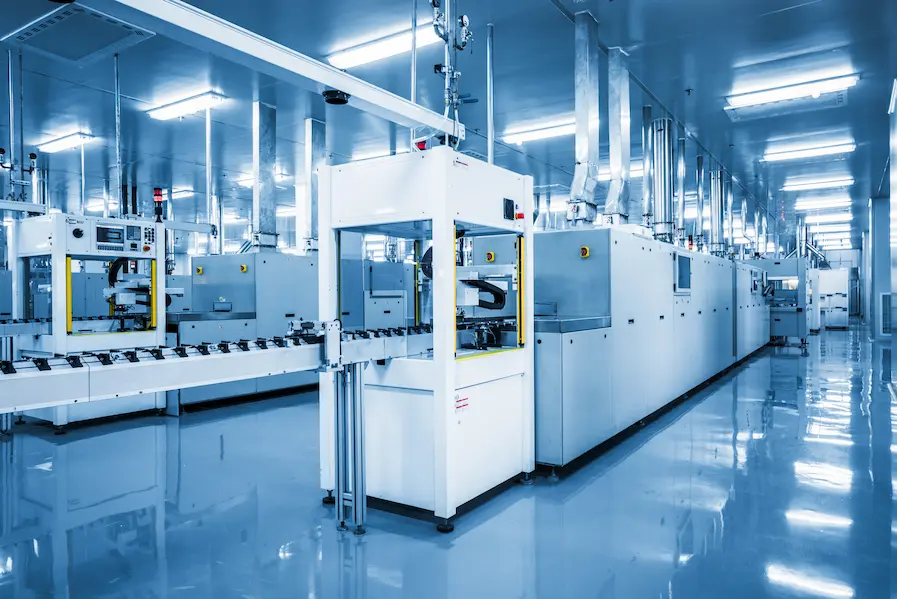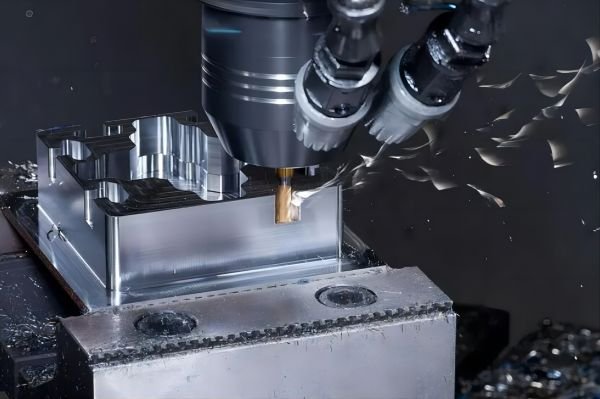The electronics industry relies heavily on CNC machining to create precise, durable components essential for high-performance devices. From heat sinks in computing to housings in consumer electronics, CNC machining enables the industry to meet the strict tolerances and high-quality standards required for electronic components. This article delves into the role of CNC machining in electronics, emphasizing the importance of advanced materials, exacting design requirements, and surface finishes crucial for optimal device performance.
As a leader in CNC machining services, CNCRUSH provides high-precision, customized CNC Milled and CNC Turned parts to meet the specific needs of our global clients in electronics and other industries. With over 12 years of expertise, our services cater to sectors like automotive, machine building, and automation, highlighting our capability in producing reliable, high-quality components for complex applications.

1. The Role of CNC Machining in Electronics Manufacturing
CNC machining’s precision and adaptability make it indispensable in electronics manufacturing, enabling the production of complex shapes and intricate designs. It’s particularly essential in prototyping and low-volume production runs, where the ability to quickly adjust designs helps companies keep pace with fast-changing technology demands.
2. Materials Commonly Used for CNC Machined Electronic Parts
Electronic components require materials that combine electrical conductivity with resistance to heat and wear. Aluminum is a popular choice for its lightweight and heat dissipation properties, while other materials like stainless steel and brass are selected for their strength and corrosion resistance. CNCRUSH specializes in working with these materials, offering CNC machining aluminum, steel, and brass to meet diverse client needs.
3. CNC Milled Parts for Electronic Housings

CNC milling is crucial for creating sturdy, precisely-fitted housings that protect sensitive electronic components from dust, moisture, and physical impact. High-quality CNC Milled parts maintain the integrity of sensitive circuits and devices, preventing potential damage from external elements. At CNCRUSH, we provide CNC Milled parts that excel in dimensional accuracy, ensuring a snug fit for electronic housings across varied applications.
4. CNC Turned Parts for Connectors and Fasteners
CNC turning is often applied to produce small, intricate parts such as connectors, fasteners, and sockets, which are foundational to electronic assembly. High precision is required to achieve perfect symmetry and smooth finishes that ensure reliable electrical connectivity. CNCRUSH’s CNC Turned parts services support exacting standards, providing the reliability required for such components in consumer electronics, telecommunications, and more.
5. Thermal Management Solutions Through CNC Machining
With increased processing power, devices generate more heat, making efficient thermal management crucial. CNC machining allows for the creation of custom heat sinks and thermal enclosures that help dissipate heat effectively. Materials like aluminum are commonly used due to their excellent thermal conductivity. CNCRUSH’s expertise in CNC machining for aluminum parts meets the thermal management requirements of high-performance electronic components.
6. Precision in Tolerances for High-Frequency Applications
In applications like telecommunications, where signal clarity is essential, CNC machining enables extremely tight tolerances that maintain precise dimensions, minimizing signal interference. CNCRUSH’s ability to meet strict tolerances makes our CNC machined parts ideal for high-frequency devices requiring exceptional reliability.
7. Surface Finishes for Durability and Aesthetics

Surface finishes such as anodizing, polishing, and passivation add both durability and aesthetic appeal to electronic parts. These finishes also enhance corrosion resistance, extending part lifespan in high-use or humid environments. CNCRUSH offers over 40+ surface finishes, customizing each to the functional and aesthetic needs of electronic components.
8. The Benefits of CNC Prototyping for Rapid Innovation
Prototyping is essential for innovation in the fast-paced electronics industry. CNC machining allows for rapid prototyping with precise adjustments, enabling faster design iterations and reduced time-to-market. CNCRUSH provides affordable CNC machining for prototype parts, allowing electronics companies to refine designs before mass production.
9. Quality Control in CNC Machining for Electronics
The accuracy and reliability of CNC machined components in electronics are upheld through rigorous quality control processes. Certified under standards like ISO 9001 and ISO 13485, CNCRUSH’s quality assurance guarantees each component meets exact specifications, from high-tolerance prototypes to finished products.
10. Future Trends in CNC Machining for Electronics

As electronics devices grow smaller and more complex, CNC machining techniques continue to evolve. Automation within CNC machining enables faster, more precise manufacturing for high-volume parts. CNCRUSH stays ahead with continuous investment in advanced CNC technologies, positioning us to serve clients as their products and requirements evolve.
CNC Machining in Electronics – A Summary Table
| Component Type | CNC Machining Process | Material Used | Application |
|---|---|---|---|
| Housings | CNC Milling | Aluminum, Plastic | Protection for internal circuits |
| Connectors & Fasteners | CNC Turning | Brass, Steel | Secure connections, electrical continuity |
| Heat Sinks | CNC Milling | Aluminum | Thermal management |
| Antenna Housings | CNC Milling | Aluminum | High-frequency signal clarity |
Advantages of CNC Machining in Electronics
| Advantage | Explanation |
|---|---|
| Precision | Enables tight tolerances critical for electronic components |
| Rapid Prototyping | Accelerates innovation through fast design iterations |
| Customization | Allows for material and design variations suited to each part |
| Consistency | Maintains uniformity across high-volume production |
FAQs
1. Why is CNC machining essential for electronics manufacturing?
CNC machining provides the precision, flexibility, and speed required to create components that meet high-quality standards, essential in a rapidly advancing field like electronics.
2. Can CNC machined parts be customized for thermal management?
Yes, CNC machined parts can be optimized for thermal management by using materials like aluminum, which has excellent heat conductivity, and designing custom shapes for heat dissipation.
3. How does CNCRUSH ensure quality in CNC machined parts for electronics?
CNCRUSH follows strict quality protocols, certified to ISO standards, to maintain consistency and precision across all parts.
With over 12 years of expertise in CNC machining, CNCRUSH specializes in delivering custom solutions that meet the evolving needs of the electronics industry. Contact us today to learn how our CNC machining services can support your project, from prototyping to production of CNC Milled and CNC Turned parts. We ensure that each component meets the precision, quality, and durability that high-tech electronic applications demand.
CNC machining is increasingly pivotal in shaping the future of electronics manufacturing, with advances that enable even greater precision, efficiency, and adaptability. Innovations such as multi-axis CNC machines and automated setups are expanding the scope of what CNC machining can achieve for complex, compact, and lightweight electronic devices. As demand rises for smaller, more intricate components with high-performance requirements, CNC technology will continue to adapt, meeting the needs of industries that rely on reliable, miniaturized, and optimized parts. At CNCRUSH, our ongoing investments in advanced machinery ensure we remain at the forefront of CNC solutions for the electronics sector.
